originally posted at https://canmom.tumblr.com/post/650460...
Hello friends! It is now… drumroll and such… more or less exactly one year since I got the daft/brilliant idea to stream some of my favourite weird animation to everyone who would watch. Gradually, this went from ‘short film night’ to ‘night where we watch 2-3 feature length films’.
Now it’s a year later. We have accumulated 52 Thursdays of animated film! I’m still working on reposting the Animation Night writeup archives on my static website, but in the meantime, here’s some of the places we’ve been…
The beginning: Aeon Flux and the Japan Animator Expo
The impetus for Animation Night basically came from two things: Aeon Flux and Me! Me! Me!… a spirit I hope I’ve managed to at least somewhat keep as we wandered around the history of animation…
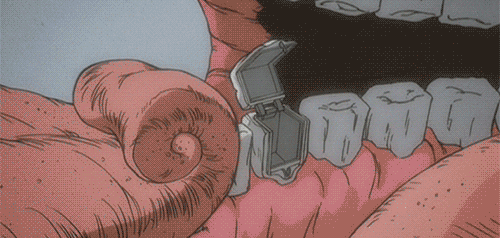
I first came across Æon Flux , back in the day, from the above gif. It completely grabbed me; I knew I had to download it immediately to get more of that feeling, whatever it was. This problably explains a lot.
So what is it? Æon Flux was the big thing to come out of MTV’s Liquid Television programming block, directed by the fascinating Korean-American animator Peter Chung. At the time, Chung had been working in the American animation industry for some years, notably designing the characters of Rugrats, but he hadn’t had the chance to express what would become his characteristic style.
Æon Flux at its most basic premise level depicts a kind of sexy super-spy girl at the border of a dictatorship, but everything about it veers away from that premise in striking ways. Its environments draw on influences like Eastern European animation to depict an fascinatingly alienating brutalist landscape, its characters have weird, angular, lumpy bodies, the direction has a fascination with physicality and injury - the iconic image of the series being a fly getting caught in an eyelash. Deaths are abrupt and not flashy, especially those of the protagonist, which come every episode for the first two seasons.

Aeon, though seemingly knowing a lot of things the viewers are not privy to, constantly trips and stumbles and dies, over and over in abrupt ways. It plays cleverly with sexuality (Trevor is a very horny dictator) - unable to show too much explicitly on MTV, it ends up getting a lot more eroticism out of stuff like the spine surgery in my favourite episode, S3E3 Thanatophobia. Aeon herself takes a strangely ambiguous role, seemingly a double agent for the two nations at war; sometimes she’s working against Trevor, sometimes she’s his lover. The pacing, too, has an unusual rhythm: lots of abrupt cuts, and episodes will be often be edited around a recurring pattern (e.g. Aeon shooting the dangling cable in S2E2 Tide)
Moreover, there’s a lot of wordless storytelling (the first two seasons have no dialogue whatsoever), and even after the characters start speaking, it’s often semi-imcomprehensible philosophical monologues that just add to the weird atmosphere. While the structure of the plot of an episode can generally be followed, a lot remains totally unexplained: the atmosphere comes above everything. (There are some fumbles and weaker episodes later on, as it starts getting more explicit with its stories, but just about everything up to mid season 3 is absolute gold.)
Aeon Flux really struck a chord with more than just me, and definitely launched the career of Peter Chung as an independent creator, getting him a chance to work on for example The Animatrix where he made something very akin to Aeon Flux. Sadly, when it saw adaptation to live action film, the adaptation abandoned every part of the atmosphere that made the series so compelling, and pretty much killed the whole thing.
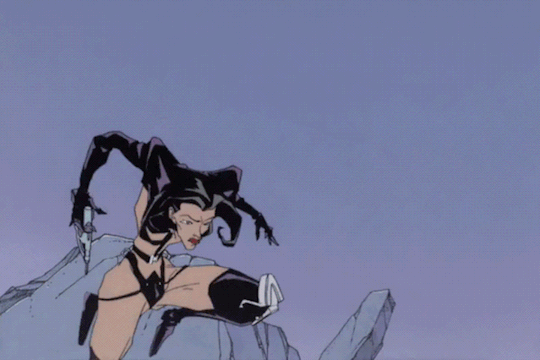
Chung went on to work with anime studios - making him one of the few people to have extensive experience in both the Western and Japanese animation industries - on a highly underrated series called Alexander Senki or Reign: The Conqueror, where he brought the same bony, angular drawing style to a story about a sci-fi world of Greek mythology retelling the story of Alexander the Great.
So, I love Aeon Flux, and I wanted a chance to show it to people. And I had a lot of enthusiasm for animated ‘package films’ like Robot Carnival.
But the thing that really got the ball rolling was something else: a collection of short films by a variety of anime directors organised by Hideaki Anno at Studio Khara in 2014. More specifically, it was the third film in that collection: an incredible music video for Teddyloid’s song Me! Me! Me! which blew my mind so much I knew I had to grab more people before I delved further into the Expo… (content note: a whoooole lotta sexual imagery. that’s kind of the whole thing.)
Me! Me! Me! is sung from the point of view of a girl who was in the relationship with a boy who, if we can read into the video, increasingly turned away from her towards otaku subcultural pursuits. the video on the other hand takes more of his perspective; as @mogsk did a great job describing at the time
you’ve got this guy whose very immersed in like otaku/gamer culture who loves this girl (or the memory of her) and seems to be mourning losing her, but as he sinks deeper and deeper into his reverie, all these little objects of his hobby life begin coming alive and tormenting him until the main girl appears as this, like, sexually terrifying entity that he only knows how to confront by basically manifesting as some sort of FPS hero, but in the end all these moe girls overwhelm him, while the lyrics say
You’ll never change, remaining like this until the day you die
Your true feelings have sunk to the bottom of a deep and dark swamp -
Yes, they’ve built and built until they’ve flooded overI’ve worked hard for myself -
What have you done for yourself?
When you notice the scattered pieces of the mirror,
You’ll realize I wanted you to notice.Is this still going on? Is this still happening?
Even though I’d been waiting for you
Even though I loved youAnd then they literally consume him, and so it kinda slots into this idea of, like, a horror scenario of the objectified reasserting her agency through terror and uncanny transformation and how that sort of plays out as a metaphor for the destruction of the ego defense of the male protag against his own attempts to see himself as, like, the victim or the one being attacked in that scenario
What makes it so unbelievably striking as a piece of animation is just how far it leans into a space of sexual imagery that very people would even dare touch and then takes it to a level of stylised and exaggerated which, combined with the intensity of Teddyloid’s music, makes it just an overwhelmingly intense sensory experience. the kind of film that blasts through most of the layers of detachment you might have and leaves you staring into space the first time you see it. I honestly don’t know if I have the language to describe its effect even now.
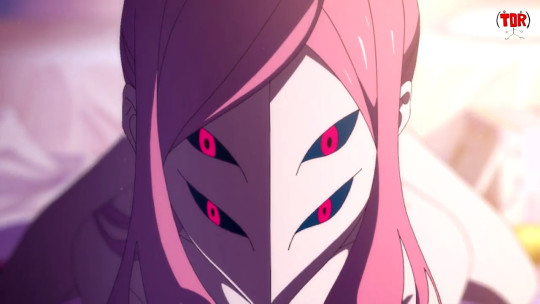
also it’s where this girl is from lmao
Anyway, we went on to watch the rest of the Animator Expo over a few nights. The collectio can be little hit and miss: there are many incredible entries, but equally many that don’t move me much and a handful that are hard nos for me like the rapey comedy robot in Hiroyuki Okiura’s Robot on the Road. But that’s inevitable: as a project, bringing together all these different studios and directors to make stuff that they couldn’t make in a more standard commercial setting has got to be one of the best ideas Anno ever had (and don’t get me wrong, I love most of his stuff).
So, that’s where Animation Night started! (DyE’s Fantasy music video was another of the inspirations.) I wanted to show people the real far psychic corners of animation, the intense and weird side that makes me go ‘holy shit, this medium’. Gradually I also started to get an idea of like, sharing the history of animation as well: writing little biographies of creators, tracing the history of techniques and such…
Below: a condensed history of Animation Night! A big collection of animated films for you to draw from if you’re ever in the mood! And at the end, an announcement of the little retrospective we’re doing tonight!
The Short Film Compilations - Robot Carnival, Memories, Short Peace, The Animatrix, Genius Party, Ani*Kuri 15, Fantasia, Allegro non Troppo
Early on in Animation Night, I was worried about keeping peoples’ attention for an entire movie - I knew people often drop in and out of streams midway and wanted things to remain accessible. (You can tell this isn’t really a concern I worry about very much anymore!) So I turned to the animated ‘package film’. These included various projects associated with Katsuhiro Otomo, and a large part of the early output of Studio 4°C. I have a lot of fondness for this era of Animation Night, since we were constantly exploring new styles and directions…
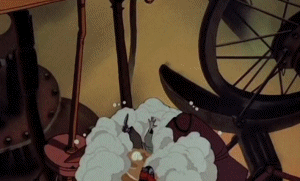
Another really lovely aspect of these films is that the shorter runtime allows animators to really go to town on the technical aspects of animation, or deliver more mood-driven pieces without getting bogged down in explaining narrative details.
Moreover, it was a chance to start to follow individual filmmakers who appeared in multiple collections: of course we all known and love Otomo, and his short films like Cannon Fodder and Construction Cancellation Order are still some of my absolute favourites. But this was also a chance to get into the work of, for example, Koji Morimoto, who went from flexing his mechanical animations in Robot Carnival‘s Franken’s Gears to delighting us with the apocalyptic atmosphere in Genius Party Beyond’s final short Dimension Bomb. And of course we got to see some early works of Masaaki Yuasa at his most unconventional!
We’d return to short films much later during a certain winter holiday, along with some lovely OVAs like the Moebius-inspired Dragon’s Heaven and the classic bit of Madhouse cyberpunk Gunnm (aka Battle Angel Alita). And as for Otomo, well, we had to watch Akira at some point right? I had a good deal of fun writing up the post-war history of Japan, but more on that habit later.
writeups:
- Animation Night 3 (very brief introduction to Robot Carnival and Memories)
- Animation Night 4 (says almost nothing! But has some clips from Genius Party [Beyond])
- Animation Night 5 (a brief history of the Disney animator’s strike, and even briefer introduction to Fantasia and Allegro non Troppo)
- Animation Night 6 (now I start putting some effort in! A brief description of each of the shorts in Memories, Short Peace and The Animatrix.)
- Animation Night 7: Soviet bloc animation (still listed as 8 on the page… a very brief intro to Soviet-bloc short animation, which frankly needs a much better treatment. I understimated how much this would take, so we ended up watching considerably more films on the night from WP!)
- Animation Night 33: Digital Juice, Dragon’s Heaven, Gunnm
Animation Night is a way to entertain people and hang out w people of course, but it’s also a cunning ploy to get people to recommend me animated films. Here are a few of them:
-
@mogsk put together an enormous list of animated music videos and gave me many brilliant recommendations for more obscure films and anime
-
scattermoon has done an incredible amount of research into European animation, combing awards lists and applying her nigh encylopedic music knowedge to put together her own DJ set of animated music videos as a companion to mogs’s one.
-
@lyravelocity has given me some really key recommendations (like tekkonkinkreet which we’re soon to get to)
-
@hamiltonianflow managed to track down copies of the Polish governments’ collections of Polish animation and put a lot of work into going through them to pick out recs
Format experiments: Tekkonkinkreet, web animators, Madoka
At this point, I was starting to run out of short film collections, and increasingly starting to try and do themed nights. Which meant, well, it was time to start considering feature length films. The current form of Animation Night was born.
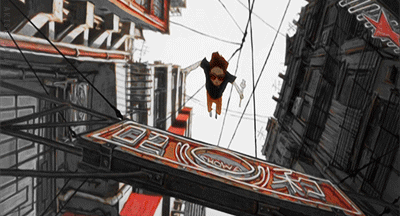
Our first foray was a film that totally caught me by surprise: Michael Arias’s film adaptation of the manga Tekkonkinkreet, which began as a project with Koji Morimoto but became fully Arias’s project after they went off to work on the Animatrix for a while. Telling the story of two street kids whose home is under threat by, straight up, the forces of gentrification and their yakuza goons, it’s carried by wonderfully stylised, visceral animation and beautiful desaturated, textured backgrounds that make its setting boil over with life. It’s one of the real treasures of Animation Night, enough so that I’m bringing it back tonight!
The next week I got the bug in my head to do something a little different and turn the spotlight onto the independent web animation scene. (I was v much a newgrounds kid lol.) I got very excited writing that one up, and I am glad I got to introduce ppl to some of my fave web animators like vewn and gooseworx (and! in turn! have mogs show me jonni phillips!). That one really launched the trend of well, writing up a big effortpost for each Animation Night. (I returned to web animation a few weeks ago for night 48, to catch up on the newest films by those same people… and visit a few more.)
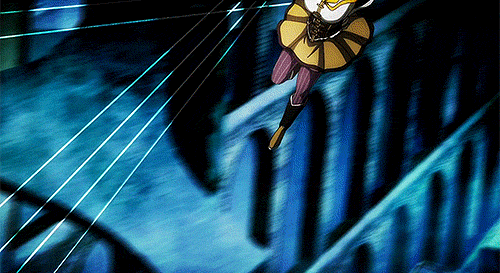
The next Animation Night was also an experiment. I adore the film Puella Magi Madoka Magica: Rebellion, but it requires the context of the series or else the compilation films… so I decided to do what seemed very ambitious at that point, and watch the whole film trilogy in one night. Which paid off really well, I think! The format worked and hopefully I got at least a few people hooked on Gen Urobuchi’s whole thing.
Auteur time: I get really into sakugablog
With the next block - and honestly, pretty much ever since - I started to use Animation Nights to focus on a particular director. Of course this is theoretically questionable: an animated film is the work of an enormous team of people, and while some films like those of Miyazaki may have an overbearing creator who insists on determining every aspect of the final production, you really can’t act like everything about a film sprung from the mind of one person. But it still makes for a good framing device!
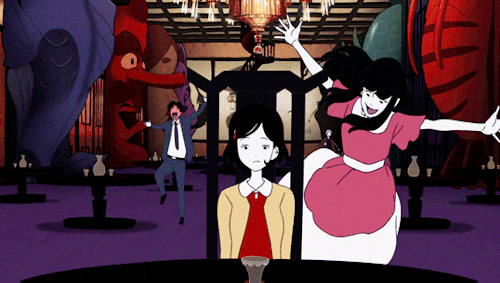
FIrst up we encountered the endlessly varied creations of Masaaki Yuasa, who remains one of my favourite creators. Night Is Short Walk On Girl was another one that snuck up on me: a constantly surprising, charming, energetic film. We were, by contrast, disappointed by Mind Game, although I do feel like I should probably give it another look in a different frame of mind. And Devilman Crybaby hit like it always did. We returned to Yuasa later on night 28, and he continued to charm with films like Lu Over The Wall.
Next up I did Naoka Yamada, one of the really great directors. Koe no Katachi is another favourite film I was really hoping to share with everyone: dealing with quite a challenging set of films with both the care and emotional intensity it needs, backed by the incredible animators cultivated by KyoAni over the years.
This was probably the first writeup to lean mostly on sakugablog lol. It was hard not to be caught up in the obvious enthusiasm of kVin, the site admin of Sakugabooru, or appreciate how much effort he’d put into contextualising KyoAni’s history and Yamada’s particular directing style. Sakugabooru is an amazing site just as a database of animation, but I’ve gotten maybe even more appreciative of kVin’s improbably well-informed writeups of trends and artists… I guess I have full on become a ‘sakuga fan’ this last year lol.
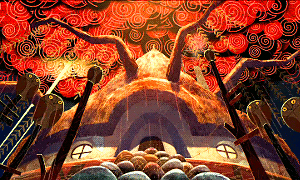
Estabishing the pattern of ‘2 weeks anime, one week everywhere else’, the next week I did one of Irish studio Cartoon Saloon and directors like Tomm Moore. When they’re in their home territory of Irish mythology, Cartoon Saloon deserve all the praise that is heaped on them: they have such an unbelievably rich sense of shot composition and strong visual library of medieval art and celtic designs, gorgeous music, really delightful character animation… and while they made a few missteps (like the monks in Kells), their Ireland-set films have only gotten more refined from The Secret of Kells up to the recent Wolfwalkers (night 49, a welcome antidote to the disastrous Klaus). Sadly, their attempt to apply the formula outside of Ireland with The Breadwinner fell into a bunch of crude stereotypes and even outright pro-invasion narratives - all the more disappointing for contrast with the much more informed and subtle hand of Persepolis a few weeks earlier.
Next up we shot through a few of the bigger names in animation auteurs: Mamoru Hosoda and Satoshi Kon. Hosoda brought us all to tears with Wolf Children, and I finally got to contextualise some delightful character animation from The Girl who Leapt Through Time - Hosoda’s a strong director but it’s the incredible work of his animators that makes his films sing so well. (Enough that we went back to him on Night 47). With Kon, the biggest surprise for me was that Paprika didn’t hold up quite so well as I remembered, but Millenium Actress absolutely killed it, and while it lacks music as memorable as Susumu Hirasawa’s parade theme, honestly I think it makes a better demonstration of Kon’s tight editing and reality blending style as well as just, having a much stronger story to back it. So that was a delight. The same went for Tokyo Godfathers, one of his strongest character pieces.
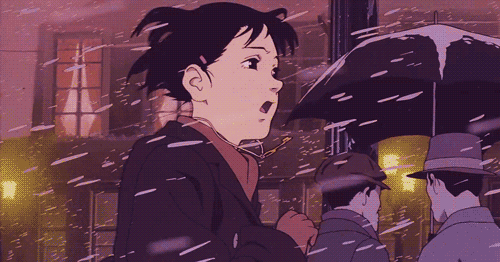
Over in the west, we have a few auteurs as well. Some, like Don Bluth, I covered over the course of theme nights. And some got their own post, like Genndy Tartakovsky with his tightly edited, abstracted ways of choreographing action, or James Baxter as the technical wizard to carry forward the Disney school of full animation (even if his efforts were so often betrayed in the editing.) Over time I got to most of the big name directors of anime: Mamoru Oshii’s moody, slow, philosophical films, Isao Takahata’s obsessive (…to the point of burning out his animators :/ ) attention to detail, or Makoto Shinkai’s beautiful photography.
Of all these different auteurs, one of my favourite surprises was Sayo Yamamoto of The Woman Called Fujiko Mine, Michiko and Hatchin, and Yuri!!! on Ice, who is just a really wonderfully stylish director: she has both a confidence in the portraying the overt sexuality of characters like Fujiko or the gay skaters of Yuri, and a great eye for cinematography, especially in the textured, pattern world of Fujiko.
The shadow of Gainax…
Hideaki Anno may have given half the impetus for Animation Night, but we hadn’t yet seen his most famous work… and indeed I hadn’t yet experienced the spectacle of Rebuild of Evangelion. I had some fun trying to explain exactly what made Eva important without using misleading clichés like “deconstruction”, though you might say someone like Matteo Wattzky does a better job of contextualising it. Regardless, the films were every bit as incredible as I hoped, with Anno bringing both some fascinating changes to the story (including a delightful extended sequence of Shinji enjoying time with Kaworu), some incredible imagery (the field of skulls in 3.0) and some pretty significant hints that something is afoot making this much more than simply a remake. Since then the last film, 3.0+1.0 Thrice Upon A Time, has dropped… and everyone, I am so desperate to see how he’s going to tie up this thematic update (come on, Anno, we all know you’ve put your girlsona in it, especially when comparing with Cutie Honey…)
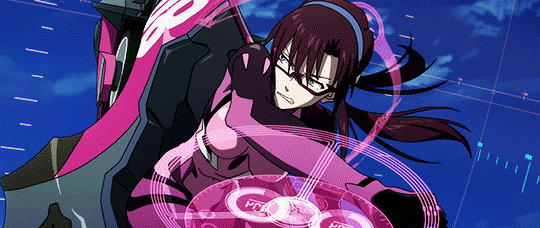
The next week I picked out two films rather tenuously linked by the concept of speed… and, ok, maybe you could add “incredible, stylish animation” or “antifascist themes”. One was Takeshi Koike’s nigh unrivalled seven-year magnum opus Redline, which surely stands alongside Akira as far as technically complex animation and brings a whole host of aesthetic ingenuity; the other, Hiroyuki Imaishi’s latest evolution of his Gurren Lagann/Kill la Kill formula in promare, featuring the most explicitly gay themes and a whole cascading series of setpieces and toyetic designs that never stops moving.
We’d return to the earlier years of Gainax on Night 29: seeing Anno’s spectacular mechanical animation in Royal Space Force, their origins in the Daicon shorts (now being restored from the original masters by Femboy Films, which is tremendously exciting), and some of their classic mecha stuff in Gunbuster.
Night 30 saw me attempt to cover Tengen Toppa Gurren Lagann, which was an absolute blast… for everyone who had already seen the series, because the compilation films were not designed for a first viewing.
‘Animation from…’
Starting in Week 11, we took a glance over at French animation, with the works of Sylvain Chomet, Persepolis and the Gobelins film school school. France has a really distinctive animation tradition, one of the only countries to even slightly compare with Japan. At their best French animated films are stylish and creative to an extreme, leaning on all the aesthetic creativity of French comics, a great deal of confidence creating powerful emotional textures, and in Gobelins, probably the best animation school in the whole industry… but at their worst, they will be blithely racist in a way that even US films have gotten cold feet. But with a little selectivity, you can get some amazing stuff. We ended up watching a decent selection of Gobelins films.
I headed back to France on Night 32, with a couple of fascinating films on the magical realism spectrum: the remarkably clever J’ai Perdu Mon Corps and the beautifully stark Takahata collaboration The Red Turtle.
Sadly, few countries have as prolific an animation industry as Japan or France. But people still love to animate shit the world over, and that has led to a series of theme nights where we pick out a few animated films from a particular place.
Animation Night 17 took us to Spain, where we got to see some pretty creative stuff: a lifelong tragic Jazz-era romance between two Cuban performers in Chico and Rita, and a fascinating look at the documentary maker Louis Bunuel’s somewhat questionable attempts to document the impoverished region of Las Hurdes in Bunuel in the Labyrinth of the Turtles. Both good films and worth a look, but the best Spanish film was yet to come on Halloween…
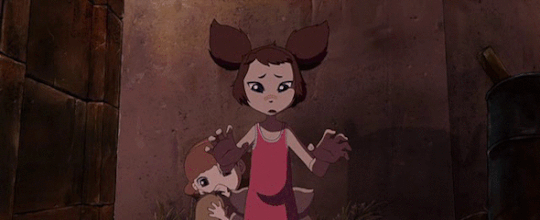
For Night 20, we turned our attention to Korean animation, both North and South. South Korea remains the primary country for animation outsourcing, but sadly there are relatively few original films… still, we had some good ones. Wonderful Days is an impressive demonstration of the talents of the team that would go on to make Avatar and Legend of Korra look so good, with a richly portrayed cyberpunk dystopia; Yobi the Five-Tailed Fox was a worthy attempt to meet Hayao Miyazaki and Isao Takahata on the mythology-driven field. And from the North, we got a fascinating look at the works of SEK Studio, the DPRK’s one major animation studio, and their long-running series of war stories Squirrel and Hedgehog. (I didn’t link at the time, but here’s a pretty decent history of their work.)
Week 21 saw holymoley helping me put together a program of Black, (mostly) american animators, who’ve had to reckon with an art form that basically spun out of minstrelsy - quite a potent psychic monster to be facing. The big one here is Aaron McGruder’s series The Boondocks (animated in Korea, but very much his project), which was pointedly political and subversive in how it located itself in the aftermath of 20th century radical movements and the anger and disillusionment it carried. Following that arc to the present took us to the gorgeous Into the Spider-Verse, which ingeniously brought together comic book art, graffiti and traidtional animation styles (e.g. hand drawn expressions and shooting on 2s) to make something really special and stylish, but also an inevitable retreat in “what is allowed to be said”.
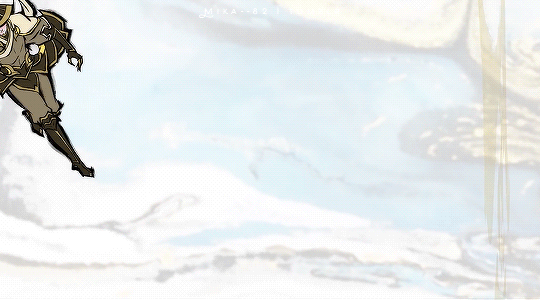
For nights 27 and 46 we did donghua (Chinese animation), and I really got to have some fun digging into the history of Animation in China. Donghua’s undergoing an incredible boom at the moment. Studios like Nice Boat and Wolf Smoke have been delivering some incredible narratives like Dahufa and god tier animation in series like Fog Hill of Five Elements.
Theme nights
The times that I really got to go wild with my writeups, though, were the nights where we had a theme rather than a director. Few were as extreme as 24: Jidaigeki night, where I attempted to summarise, in some detail, the origins and socioeconomic history of the samurai class. I’m not sure how much this added to films like Sword of the Stranger, but it sure was fun.
23 - Small Fwuffy Animals was a fun one. Nominally the theme was like, realisticish depictions of animals, but in practice, all that nature, red in tooth and claw stuff? We got as close as animation has gotten, with films like Watership Down and the death scenes of The Animals of Farthing Wood. Honestly, Watership Down - as much as it might lose some of the complexity and nuances of rabbit religion explored in the book - does an amazing job of naturalistic animation and conveying a sense of omnipresent threat.

25: Halloween was one of the best nights, because we got to watch some absolutely incredible films. Vampire Hunter D Bloodlust was an aesthetic delight, but the big surprise was the absolutely incredible film Birdboy: The Forgotten Children by Alberto Vásquez. It’s a film that could easily have fumbled its punches and just fallen into a hollow edgyness, but it sidesteps the pitfalls and its whole subtle sense of desperation and dark humour builds up in just the right way to become one of the most memorable movies we watched.
26: Nuclear War was perhaps one of the more emotionally harrowing nights in the whole series, putting When The Wind Blows and Barefoot Gen together with In This Corner of the World. But it’s a topic that hits me pretty hard! I wrote a whole bunch about the origins of nuclear weapons, and living in a kind of universe that has them.
For 31: Hanukkah, I ended up talking more about the history of Dreamworks animation and Don Bluth, since I can’t speak too well to the significance of the holiday… but it seemed to strike a chord with people, that was one of my more popular posts!

Other theme nights focused around a technique, such as 40: Live Action x Animation, and 50: Stop Motion a couple of weeks ago. The big star of 50 was the remarkable squishy body stuff of Jan Švankmajer; meanwhile on 40 Roger Rabbit held up as well as ever and it was certainly fun returning to Space Jam. But then there was Cool World, which I can’t necessarily say is a ‘good film’ but definitely left a powerful impression, to the point that ‘to be coolworlded’ has become something I say like. all the time.
Franchises
A few times I’ve just tried to cover a franchise that speaks to me - we’ve mentioned a couple like Madoka and Gurren Lagann above, but here’s a few more!

I honestly think I could have done a better writeup of Ghost in the Shell, but apparently my historical notes struck a chord with people, because it proved one of my post popular Animation Night posts :3 guess you all love the cyborg also
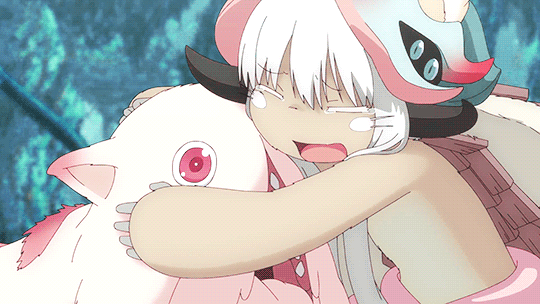
Made in Abyss has lodged itself in my memory and won’t let go, and indeed it seemed to have much the same effect on everyone else when we put up our psychic shields and went for two compilation films and Dawn of the Deep Soul. No less harrowing the second time round; but the horror relies not just on shocking content, but also really strong direction and character animation to really connect us to the kids before well uh. all that shit happens!
Lupin III, despite being an absolute blast of a night, never got the writeup I intended… adhd is a fucker! I’ll get there, maybe by the time we do another Lupin night.
And then there was Pokémon! Honestly, this was mostly an excuse to show the delightful animation of the Twilight Wings series.
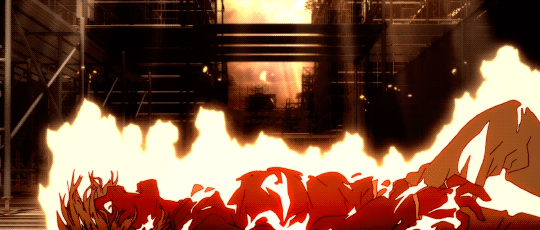
And that brings us up to the present! Last week we saw the remarkable ‘wound story’, Kizumonogatari, another sakugablog favourite. This led to some fascinating discussions of the evolving nature of fanservice while the vampires smashed each others’ arms off. They are spectacular on a character acting level, developing the Monogatari series’s experimental techniques with some truly inspired expressions of emotion. Honestly, even if you were put off by the dickhead protagonist in Bakemonogatari, I think these films are worth it.
What of today?
What an amazing year honestly. (I mean, on the animation watching front, not the pandemic one.) Had no idea I would end up being a film nerd projectionist type of person, or start on the road to becoming an animator myself, when I started this thing. And I feel reasonably proud that I’ve kept to the spirit of presenting the whole scope of animation, famous and obscure - all the enormous emotional power you can get out of arranging images in time…
Tonight the plan is to do a kind of retrospective! I’m gonna pull out a few favourites - currently thinking Aeon Flux, Tekkonkinkreet, Birdboy, some of the short films - from the whole span of Animation Night as a celebration of this cool thing we made. I’ll definitely be taking requests, so if there’s something you feel bad about having missed, ask me and I might just be able to fit it in!
After that? Not going anywhere! (Unless Twitch bans me, in which case I’ll need to find a different place to stream.) We may have ticked off the biggest names, but there’s loads more animation to explore, and oh gosh this is too much fun - so I would love to keep this going for another year, even if the format ends up changing again to focus more on TV or something as we start to run out of films. (Not that we’re anywhere close to that yet.)
Since I’m already running a whole hour late, Animation Night 52 will be starting at 8pm UK time, about 5 minutes time. Hope to see you there as ever <3
Comments